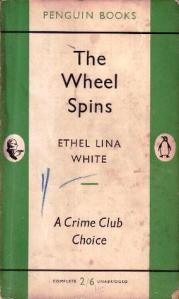At the beginning of last year, I resolved to read 40 books in 2015, largely the result of having failed in the previous year to do just that. Anyone who knows me well will probably tell you I can be quite driven when I feel so inclined (particularly when I feel I have previously failed to achieve something).
My resolve was reinvigorated when, halfway through the year, my sister, who also committed to reading 40 books in 2015, told me that next year she would probably have to try for more, because it was “too easy” getting through 40 in a year. If I had been having doubts about the feasibility of forty, that quenched them. (I am competitive only with myself and with my sister, apparently.)
Forty books in a year means you’re reading approximately three books a month, with four months in the year in which you read a total of four books. If you’re reading at an even pace throughout the year. Reader, I did it.

via Goodreads
There were actually things I liked about the challenge of getting through forty books. I would be zoning out, half-watching something on TV and half-playing a game on my phone, not fully engaged with or committed to either thing, when I would ask myself: “Would I rather be reading right now?” and finding the answer was often yes. (I’ve decided it’s mostly healthier for me to commit 100 percent to one thing than be 50-50 on more than one thing at a time.)
But forty is a lot of books, and, frankly, it leads to a lot of poor choices.
Poor choices like staying up to finish book number 40 at about 2 a.m. on January 1. (The bulk of it was read in 2015, so it totally counts.)
Poor choices like finishing books you weren’t even really that engaged in just because there was less left to go in one of them than starting and finishing something that really might engage you.
Poor choices like choosing to read lighter fare (I won’t call it trash) instead of something more challenging simply because you could get through it more quickly.
So for 2016, I’ve decided my mantra is read better. I decided to follow the Modern Mrs. Darcy’s 2016 reading challenge, which is to pick one book for each category she’s chosen for the year and read those twelve books in 2016. With the freedom to read whatever else I want (which will of course include plenty of lighter fare) in whatever quantity I want in addition to those twelve books. I’m pretty excited about it.
Here are my twelve books (all credit for these categories, again, goes to the Modern Mrs. Darcy!):
- a book published this year — The Rose and the Dagger
- a book you can finish in a day — The 39 Steps
- a book you’ve been meaning to read — Caliban’s War
- a book recommended by your local librarian or bookseller — The Glass Sentence
- a book you should have read in school — Far From the Madding Crowd (I was supposed to read Thomas Hardy in my Victorian lit class, though not this one, but I think I would rather read my car manual than ever read the rest of Jude the Obscure, so this one will have to do)
- a book chosen for you by your spouse, partner, sibling, child, or BFF — picked by my sister, Fangirl (funny story: I originally recommended this book to my sister, though I hadn’t read it, which she did not remember when she did finally read it, and now she won’t stop talking about it to me)
- a book published before you were born — Angle of Repose
- a book that was banned at some point — Their Eyes Were Watching God
- a book you previously abandoned — Wolf Hall
- a book you own but have never read — The Towers of Trebizond
- a book that intimidates you — All My Puny Sorrows
- a book you’ve already read at least once — Heaven to Betsy
Do you have a reading resolution for 2016? Please share!






